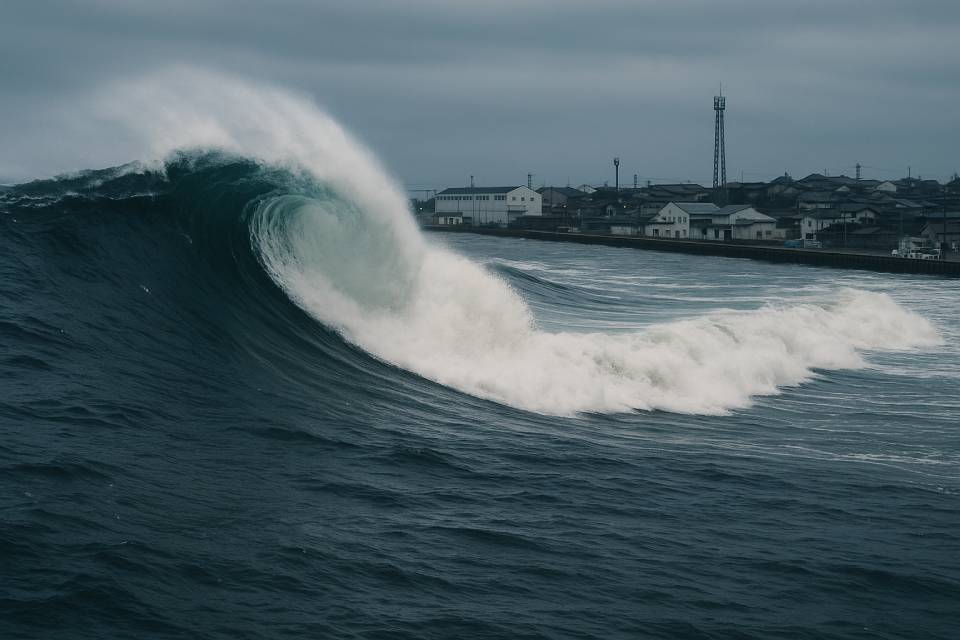Date: July 30, 2025 | Location: Hokkaido, Japan
The calm of a typical Wednesday morning in northern Japan was shattered when the first tsunami wave hit Hanasaki Port in Hokkaido. According to NHK World Japan, the wave reached approximately 30 centimeters in height—seemingly small, but carrying significant force. And this could be just the beginning.
Small Wave, Big Impact
While 30 cm might sound minor, NHK warns that tsunami waves are much more powerful than normal ocean waves. Even a wave as low as 50 cm (1.6 feet) can exert a force equivalent to 200 kg (441 lbs)—enough to knock down an adult and drag vehicles or debris inland. It’s not the height alone that makes these waves dangerous—it’s the sheer power and momentum they carry.
Experts emphasize that what may appear as a harmless swell can turn deadly in a matter of seconds.
Where Else Could the Tsunami Hit?
Initial reports indicate that other areas may have already been hit by similar tsunami waves, though specific details are still being confirmed. The Japan Meteorological Agency (JMA) has issued tsunami warnings for a wide stretch of the country, ranging from Hokkaido in the north down to Wakayama Prefecture in central Japan.
If you’re in any of the affected areas: Don’t wait. Evacuate immediately.
JMA Urges Immediate Evacuation
In a live press conference, the JMA strongly advised anyone within the warning zones to evacuate to higher ground immediately and stay away from coastal areas and riverbanks. One of the most dangerous aspects of tsunamis is their unpredictability.
“Tsunamis often come in a series,” a JMA spokesperson said. “The second or third wave can be higher and more powerful than the first.”
That’s why the agency warns against returning home too early. Even after the first wave, more may follow—sometimes hours later.
When Is It Expected to End?
The tsunami waves were expected to begin around 10:00 AM local time and could continue hitting the coastline until around 2:00 PM. However, as with all natural disasters, these are estimates. The JMA stresses that residents should remain alert and wait for the official all-clear signal before returning to low-lying areas.
A Nation on Alert
Japan is no stranger to tsunamis. The country has some of the world’s most advanced early-warning systems, and local residents are trained to respond quickly. However, the memories of past disasters—like the 2011 Great East Japan Earthquake—still linger.
Today’s warning is a reminder that nature’s power remains ever-present.
What Should You Do Now?
If you’re currently in Japan and within the warning zones:
Head to higher ground immediately
Stay tuned to NHK or local authorities for updates
Avoid the coast and river mouths
Don’t return until the tsunami warning is officially lifted
Even if the initial wave seems small or harmless, do not let your guard down.
This developing story highlights how quickly nature can shift from calm to catastrophic. As authorities monitor the situation closely, the hope is that damage and casualties can be minimized through quick action and public preparedness.
Stay safe, stay informed, and don’t underestimate the sea.


AloJapan.com